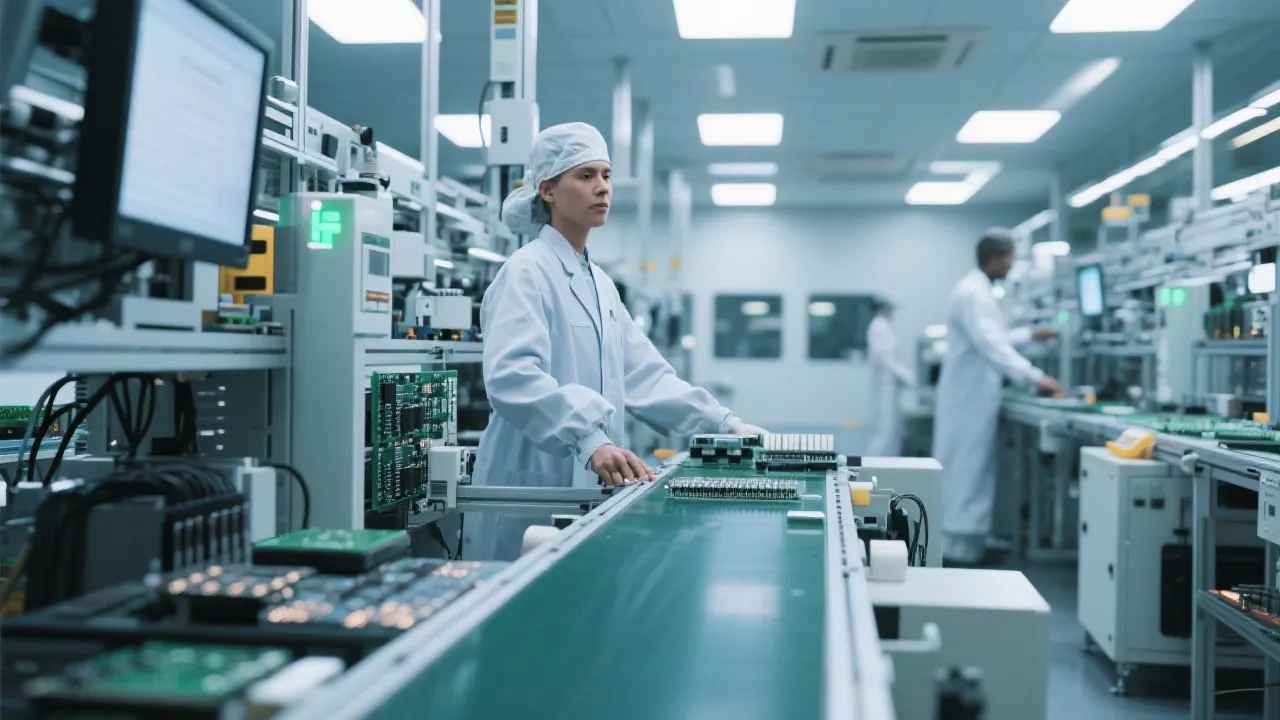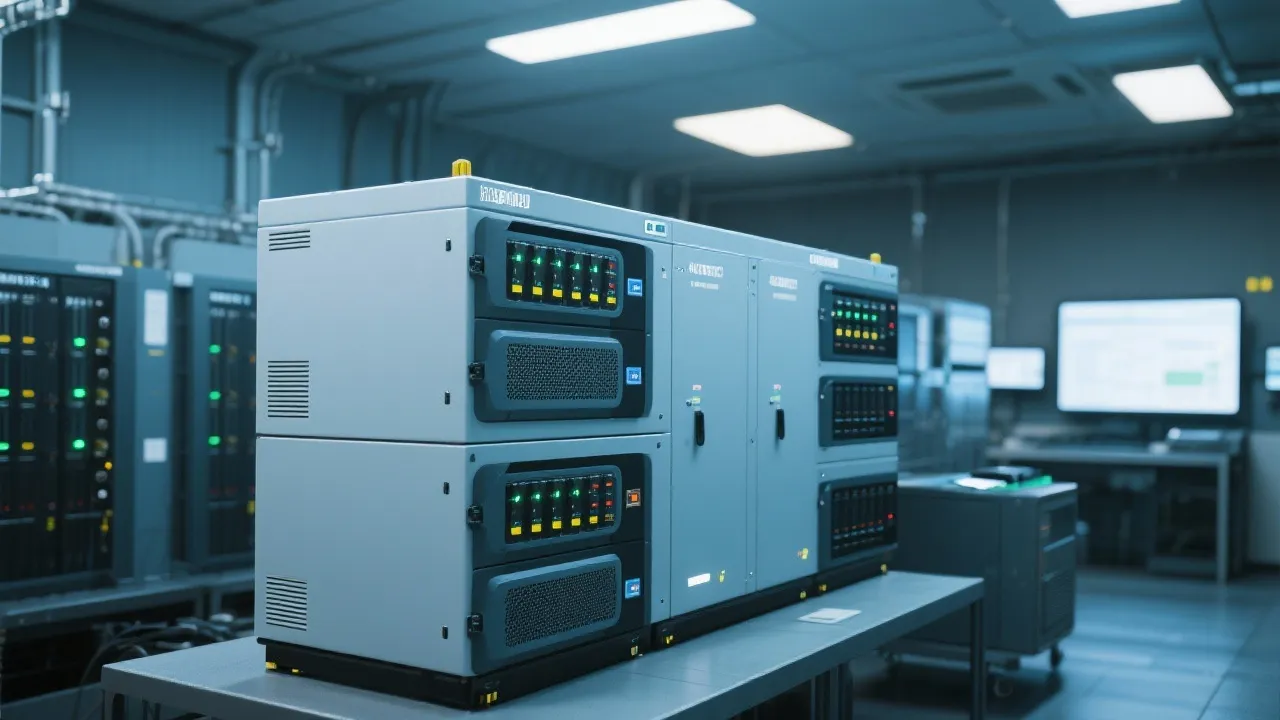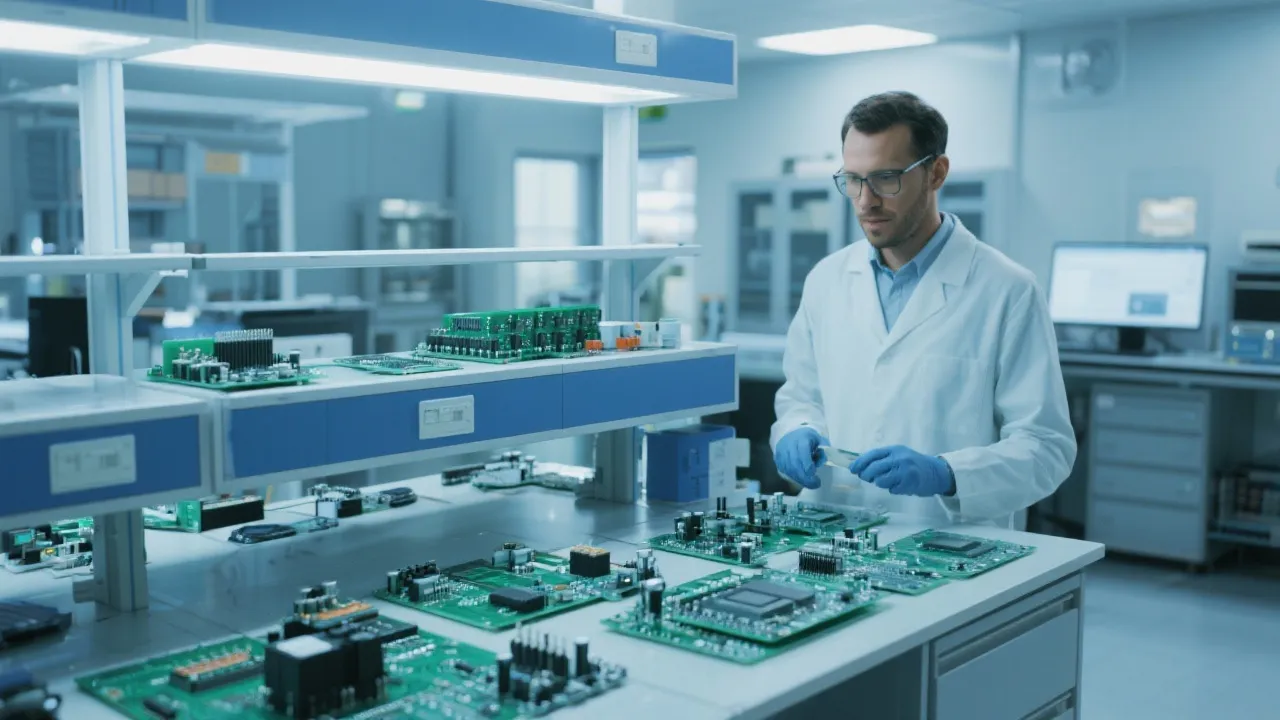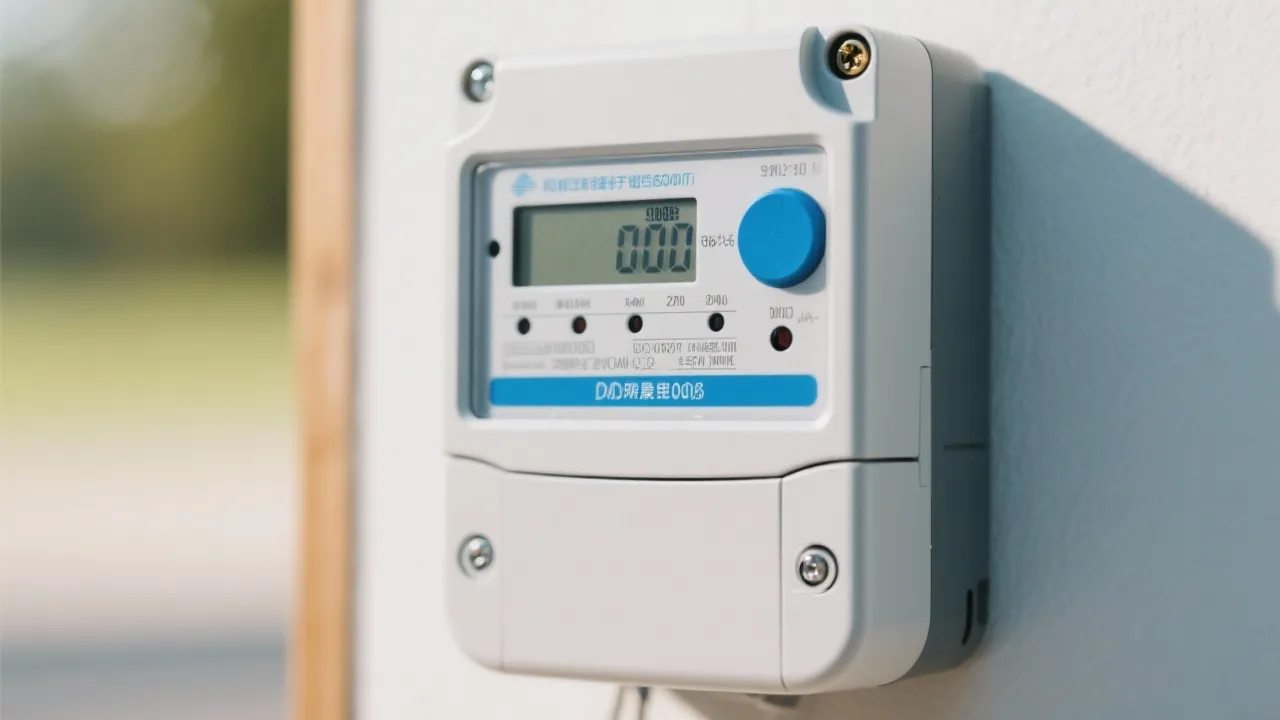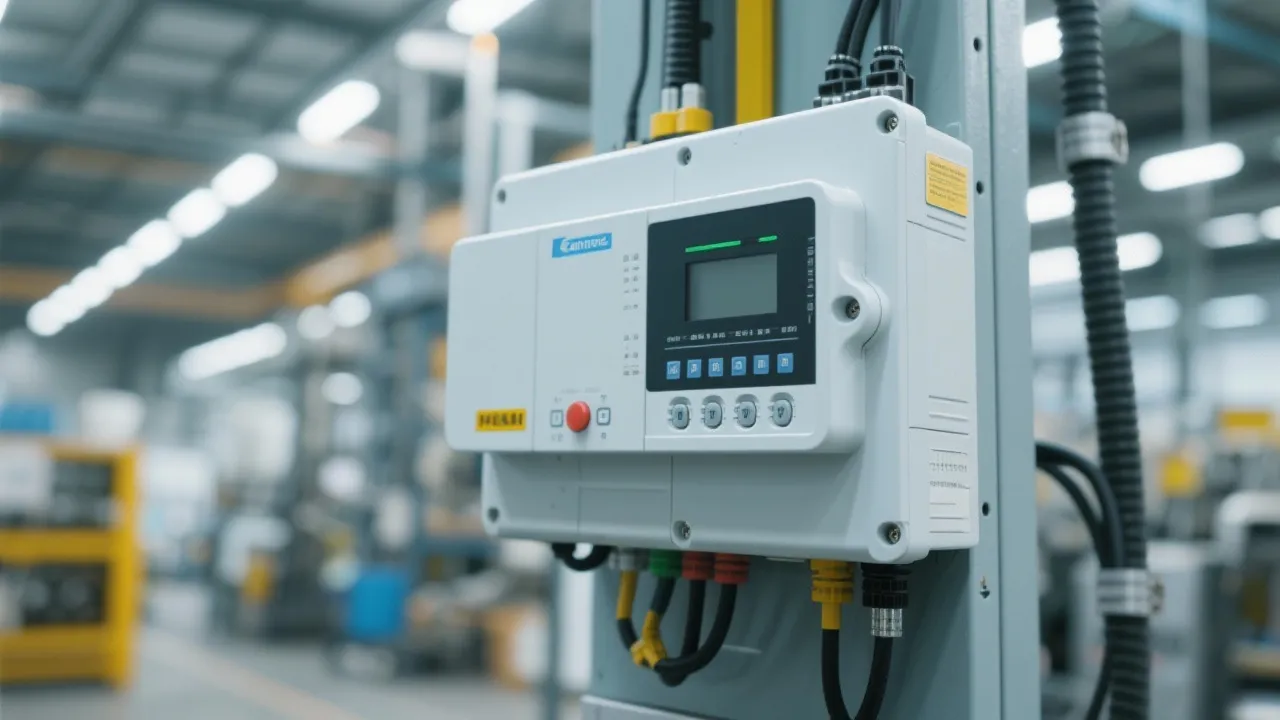Unveiling the Agilent 5977b
This article explores the cutting-edge Agilent 5977b GC/MS system, renowned for its high precision in analytical chemistry. The Agilent 5977b is a sophisticated gas chromatograph/mass spectrometer combining robust performance with advanced analytical capabilities, widely utilized in labs for detailed chemical analysis.
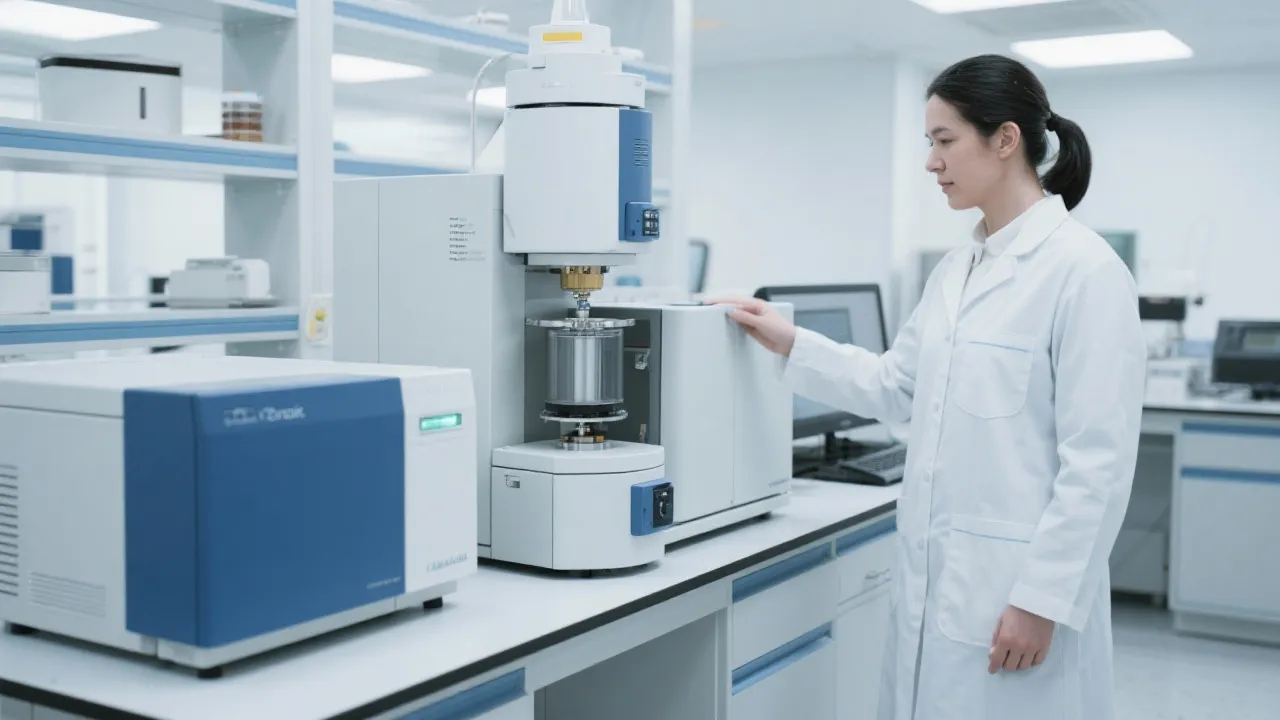
The Agilent 5977b: An Introduction
The Agilent 5977b is a leading instrument in analytical chemistry, blending advanced technology with high-performance parameters. Designed for professionals in the scientific community, its applications revolve around the fields of environmental analysis, food safety, and pharmaceutical research. This gas chromatograph/mass spectrometer (GC/MS) system offers reliable, precise, and rapid results, setting a benchmark in complex compound analysis. As laboratories increasingly face demands for speed, precision, and environmental responsibility, the capabilities of the Agilent 5977b make it an indispensable tool for meeting these challenges.
Key Features and Specifications
Engineered for high efficiency, the Agilent 5977b features a powerful mass selective detector, offering enhanced sensitivity and reduced detection limits. This system is optimized with a robust quadrupole analyzer that ensures high-resolution mass spectrometry. Its unique inert source technology and gold-sealed ion optics promise minimal maintenance and superior accuracy, further underlined by its compatibility with a broad range of detectors and sample introductions. These innovations collectively make it indispensable for analytical chemists.
One of the defining features of the 5977b is its high throughput capability, which allows laboratories to conduct more analyses in less time without sacrificing data quality. This is particularly crucial in industrial settings where speed impacts profitability and operational efficiency. Furthermore, the integration of smart software algorithms enhances capabilities such as data processing, analysis, and alignment of chromatograms, which significantly reduces the potential for human error during data evaluation.
Additionally, its built-in diagnostic tools provide real-time status updates, helping to minimize downtime by identifying potential issues before they become major problems. The Agilent 5977b also offers various configuration options, allowing customization based on specific analytical needs, which is vital in catering to diverse research fields. The flexibility in configurations ensures that different laboratories can adapt the Agilent 5977b to fit their specific applications, whether it’s environmental testing, quality control, or academic research.
Applications and Industries
The Agilent 5977b finds extensive use across various industries. In environmental analysis, it assists in detecting pollutants at trace levels, ensuring compliance with stringent environmental standards. For instance, water quality testing for contaminants such as heavy metals, pesticides, and organic pollutants can be efficiently performed. Environmental agencies rely on the results provided by the 5977b to assess pollution levels and enforce regulations aimed at protecting ecosystems and public health.
The food safety industry benefits significantly from its ability to analyze pesticide residues, contaminants, and additives in various food products. Safety standards necessitate rigorous testing of food items, making the 5977b an essential asset in ensuring consumer safety. For example, regulatory bodies often require frequent assessments of food products to ensure that pesticide levels remain below legally permitted thresholds, which is achieved effectively using this advanced system.
Pharmaceutical labs utilize the system for drug compound analysis and purity testing, facilitating the development of new medications and the assurance of product quality. The high sensitivity and resolution of the Agilent 5977b allow scientists to identify and quantify active pharmaceutical ingredients (APIs) and their metabolites in complex matrices, thus ensuring that medications meet safety and efficacy standards.
In the petrochemical industry, the Agilent 5977b is instrumental in the characterization of hydrocarbon compositions, assisting in refining processes and ensuring quality control of fuels and lubricants. The ability to identify trace components helps manufacturers optimize their production processes and enhance the performance characteristics of their products.
In clinical research, the Agilent 5977b aids in biomarker discovery and analysis, which is pivotal in understanding disease mechanisms and developing new therapeutic strategies. The capability to analyze complex biological matrices such as blood and tissue samples broadens the applications into the biomedical field, creating intersections between chemistry and health science.
The Agilent Advantage
With the evolving demands of the analytical chemistry industry, Agilent continually updates the 5977b to ensure it meets and exceeds industry standards. Its user-friendly software interface simplifies complex data interpretation, while automated workflows enhance throughput, a crucial factor in high-demand lab environments. Agilent’s global support network further ensures users have access to troubleshooting and maintenance assistance anytime it’s required. This level of customer care contributes to lower operational costs and improved laboratory productivity.
Users of the Agilent 5977b benefit not only from the equipment itself but also from a suite of comprehensive training programs and resources. These educational tools ensure that laboratory personnel can utilize the system to its fullest potential. Webinars, online tutorials, and hands-on training sessions facilitate a seamless integration into daily laboratory operations, ensuring that users are well-equipped to harness the capabilities of the 5977b efficiently.
Moreover, Agilent’s commitment to innovation means that the 5977b constantly evolves with the technological landscape. New capabilities and features are seamlessly introduced to adapt to changing analytical needs and comply with emerging regulations. This proactive approach helps maintain the Agilent 5977b’s position as a leading instrument in the marketplace, providing a competitive edge to laboratories that invest in this advanced GC/MS technology.
Comparison with Other Models
| Model | Detection Limits | Key Features |
|---|---|---|
| Agilent 5977b | Low ppt | Inert technology, high sensitivity, robust diagnostics |
| Agilent 7890B | Low ppb | Enhanced flow path, versatility in detectors, cost-effective |
| Agilent 7000C | Ultra-low ppt | Triple quadrupole, advanced analysis modes for complex mixtures |
The comparison above highlights the diverse capabilities of the Agilent 5977b in relation to other models in Agilent’s portfolio. While the 7000C excels in ultra-low detection, it is tailored for more specialized applications often requiring expanded capabilities. The Agilent 7890B provides solid value in terms of versatility and cost-effectiveness but does not match the 5977b's sensitivity when it comes to trace analysis. This comparative study helps users identify the best option depending on their specific analytical needs. By understanding their requirements, laboratories can choose the most suitable model that balances performance, cost, and operational efficiency.
Environmental Impact and Sustainability
Incorporating sustainable practices, the Agilent 5977b is designed with energy efficiency and minimized chemical waste production in mind. Continuous updates aim to further reduce the environmental footprint of laboratory operations, aligning with global sustainability goals. Furthermore, Agilent supports recycling programs and offers trade-in options for older models, encouraging the development of eco-friendly lab environments. This commitment extends to the lifecycle of the product, where Agilent emphasizes the procurement of sustainable materials and responsible manufacturing processes.
The development of the Agilent 5977b reflects a broader trend in the scientific community to embrace environmentally responsible practices. As consumers and regulatory bodies become more aware of the environmental impact of laboratory practices, the choice of instruments, such as the 5977b, can significantly influence a laboratory's ecological footprint. For example, laboratories can significantly lower their energy consumption by utilizing the intelligent power management features integrated into the Agilent 5977b, contributing to a more sustainable workflow and reducing operating costs associated with high energy use.
To further promote sustainability, Agilent provides a range of analytical solutions that utilize fewer hazardous substances without compromising performance. For instance, the 5977b facilitates the use of alternative solvents and greener methodologies in sample preparation, contributing to the reduction of toxic chemical waste. Such initiatives reflect Agilent's dedication not only to scientific advancement but also to stewardship for the environment.
FAQ: Your Questions Answered
- What is the primary advantage of the Agilent 5977b? The Agilent 5977b offers unparalleled sensitivity and precision, making it suitable for a wide range of analytical applications, from environmental monitoring to pharmaceuticals. Its ability to deliver accurate results at low detection limits is essential in meeting regulatory standards across various industries.
- Who should consider using the Agilent 5977b? Laboratories involved in complex chemical analyses, particularly in fields like environmental science, food safety, and pharmaceuticals, should consider this system. Its versatility and efficiency make it beneficial for both routine analysis and research applications.
- How does Agilent support 5977b users? Through a comprehensive support network, Agilent provides software updates, maintenance services, training resources, and troubleshooting help. This support enhances the user experience and ensures optimal performance of the system over its lifespan.
- Are there sustainability benefits? Yes, the Agilent 5977b promotes energy efficiency and minimized waste production, contributing to eco-friendly lab practices. Its design facilitates greener methodologies and reduced solvent usage, responding to the demand for sustainable lab operations.
Conclusion
The Agilent 5977b stands as a significant advancement in GC/MS technology, providing scientists with the tools necessary to perform detailed chemical analyses efficiently. Its blend of innovation, ease of use, and environmental considerations positions it as an essential instrument for any forward-thinking laboratory aiming to tackle the challenges of modern analytical chemistry. Beyond its technical specifications and functionalities, the Agilent 5977b embodies a commitment to advancing scientific inquiry responsibly and sustainably. As laboratories worldwide seek solutions that align with both their analytical needs and ethical responsibilities, the 5977b serves not just as a tool, but as a partner in discovery and innovation.
As we continue to navigate challenges such as climate change and public health crises, the role of cutting-edge technology like the Agilent 5977b will only grow in importance. The demand for precise, reliable, and efficient analytical instrumentation will escalate as industries adapt to meet regulatory pressures and consumer expectations. The future of analytical chemistry is undoubtedly intertwined with the advancements encapsulated in instruments such as the Agilent 5977b, presenting a promising horizon for scientists dedicated to making significant contributions to society through their research. Thus, investing in advanced technology like the 5977b is not merely about acquiring an instrument; it is about empowering a generation of scientists and researchers to advance our understanding of the world while preserving it for future generations.





